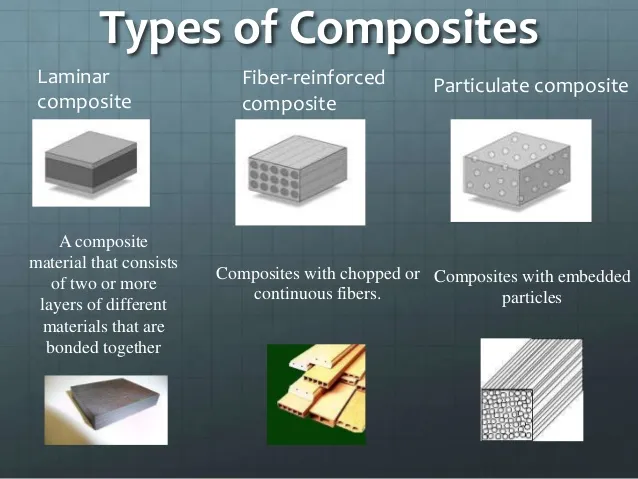Classification of Composites Based on Reinforcement
The main function of reinforcement agents is to provide strength to the composite structure. Based on reinforcement composites are classified into three types:
- Fibre Reinforced composites
- Laminar composites
- Particulate composites
Fibre reinforced composites are, further, classified into composites reinforced with short staple fibres or with continuous filaments. The laminar composite consists of a varying number of layers of reinforced material with the matrix. Particulate composites are manufactured using particles, in the form of flakes or in powder dispersed in a matrix.
1. Fibre Reinforced Composites
In fibre reinforced composites, natural or synthetic fibres are used as reinforcing materials in different forms and architectures. In these composites, fibre acts as the main load-bearing component. Fibre structure, length of the fibre, and fibre orientation towards applied load decide the performance of the composite. These types of composites are lightweight yet durable and rigid. As per the requirement, organic or inorganic fibres are used to reinforce composite materials. Most of the inorganic fibres are thermally stable and rigid. Fibre reinforced composites can be classified according:
- The form in which the reinforcement fibre material is used, is either continuous fibre composites or short fibre composites.
- The fibre alignment. Either unidirectional, bidirectional or multidirectional. This is an important aspect regarding the strength of the composite.
2. Laminar composites
To achieve a certain thickness of the product composites are formed, using several layers in the prepreg. These composites contain layers of materials held together by the matrix and are considered multi-layer or laminate composites. Several combinations of laminates account for, metal-metal laminates, wood-plastic laminates, etc. Laminates can also be composed of reinforcement as textile structures like layers of nonwoven, woven fabrics, braided fabrics, and fibre mats.
The number of layers and stacking order are the two important parameters of these composites.
3. Particulate Composites
Particle reinforced composites are manufactured using particles of one component dispersed in the other component. Reinforced particles may have different shapes such as square, triangular and round. The dimensions of all sides of these particles are observed to be equal. The behaviour of the particulate reinforced composite is governed, mainly by characteristics of the particles such as diameter, spacing between the particles, and its volume fraction.
#CompositeMaterials #MechanicalEngineering #MaterialsScience #Strength #Stiffness #Toughness #FatigueResistance #CreepResistance #Density #ModulusOfElasticity #EngineeringMaterials #AdvancedMaterials




Comments
Post a Comment